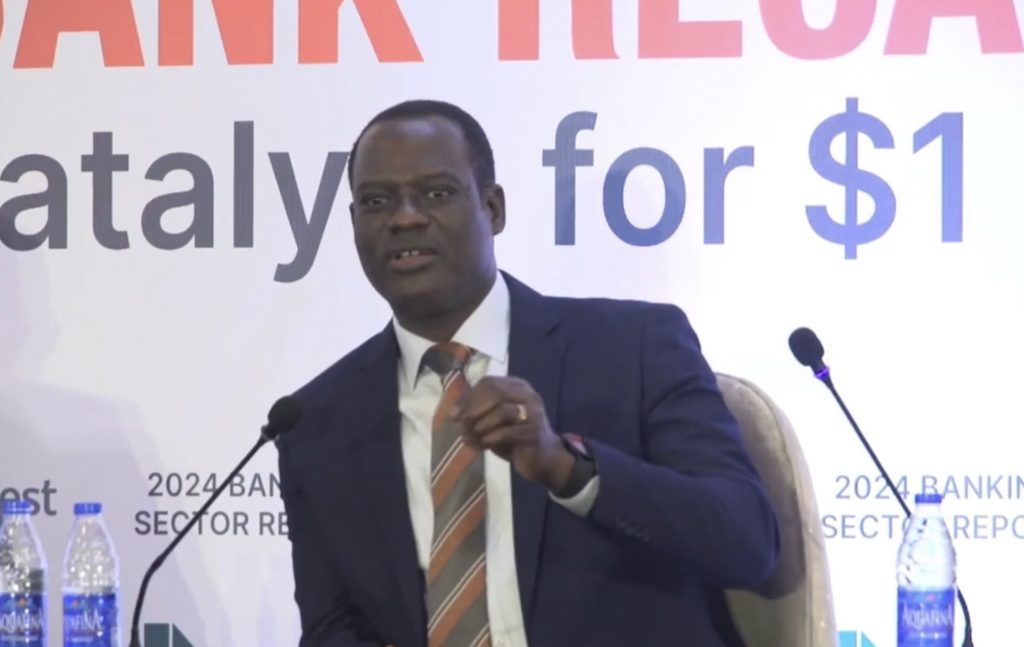The Chairman of the Presidential Fiscal Policy and Tax Reforms Committee, Mr. Taiwo Oyedele, has urged state governors to borrow only when it is to build infrastructure that drives growth.
In his keynote address at the official launch of the 10th edition of The State of States report by BudgIT Foundation in Abuja on Tuesday, Mr. Oyedele said that the level of debts owed by state governments is assuming an alarming proportion, adding that Lagos and Edo states carry debts of N100,000 per capita.
He said, “There is nothing wrong with borrowing; what matters is what you are borrowing for? We need to borrow less for recurrent spending, if at all and borrow responsibly for infrastructure and productivity.”
While expressing concern that many states are still focusing on recurrent expenditure rather than capital, he commended states like Abia, Enugu, Lagos, Ebonyi, Anambra and Taraba, which he said are spending over 70 per cent of their budgets on capital projects.
He informed that the new tax laws that will take effect next year will reallocate up to one-third of the Federation’s revenue to the states.
Oyedele disagrees that the Federal government is getting a larger chunk of the resources and that more resources should be given to states. According to him, states actually receive 85 per cent of the resources, while the Federal Government receives only 15 per cent.
He said the problem is not assigning more resources to the states; it is optimising what is already available and ensuring it translates into value for citizens.
On the way forward, he called for deepening the revenue reforms and rethinking the country’s fiscal federalism. He advised states to harmonise their taxes and tax laws, digitise tax collection and invest in the informal economy, not seeking to extract tax from vulnerable citizens.
“We must stop taxing capital and investments, such as the excessive right-of-way levy, business permit, which raises the business risk and rate of failure for small businesses,” he said.
He said it is time to shift from spending to investment, especially in education and health.
He called for better accountability, especially at the local government level.
“While we celebrate the windfall in revenue, the real test is whether states can turn the current revenue windfall into sustainable growth and utilise those resources judiciously,” he said.
The State of States Report is an annual publication evaluating each state’s long-term fiscal performance and sustainability.
The 2025 edition, which marks the tenth edition of the report, has as its theme “A Decade of Subnational Fiscal Analysis: Growth, Decline and Middling Performance”. It covered 35 states, leaving out Rivers State.
The report ranked Anambra as the best-performing state in the federation, while Lagos maintained second place. Other states in the top five are Kwara, Abia and Edo.
Lagos retained its second position for the second year in a row, while Kwara moved up from 4th in the 2024 edition to 3rd in 2025. Edo State, a new entrant into the top five group, had been lurking in the top 10 range for the last four reporting periods.
Abia State is the strongest-performing state, having never been in the top 10 and now ranking fourth in the country. Akwa Ibom moved up 17 positions from 27th in 2024 to 10th position in 2025, while Zamfara moved up nine positions from 26th in 2024 to 17th in 2025. Kogi, Jigawa, Benue, and Yobe ranked lowest, but Cross River, in particular, fell the most, from 5th in 2024 to 30th in the 2025 edition.
In terms of internally generated revenue (IGR) performance, unlike in the 2024 edition, where Rivers with 121.26 per cent and Lagos with 118.39 per cent were the only two states that had more than enough IGR to cover their operating expenses, Lagos increased its IGR by 120.87 per cent, while Enugu had the highest IGR to operating expense ratio at 146.68 per cent.
Unlike the previous year’s report, in which six states generated enough IGR to cover at least 50 per cent of their operating expenses, this year only five states achieved that feat: Abia, Anambra, Kwara, Ogun, and Edo.
This means that, among other things, 28 states needed substantial federal transfers. For perspective, according to the report, “in the 2024 edition, only six states needed more than five times their IGR to cover their operating expenses. In the 2025 edition, that number has more than doubled. States in the 2025 report needed five times their IGR just to cover operating expenses. This implies that some states struggled with IGR growth in the 2024 fiscal year.” It further noted that, as in the previous reporting period, when every state in the federation raised enough revenue—consisting of IGR, federal allocations, aid, and grants—to fully cover their recurrent expenditures, the 2025 edition saw that number sustained. No state needed to borrow to cover its total operating expenses.
Regarding capital expenditure prioritisation, Abia State had the highest proportion of its total expenditure allocated to capital items in the 2025 report, at approximately 77.05 per cent. Alongside Abia, states such as Anambra, Enugu, Ebonyi, and Taraba all spent more than 70 per cent of their budgets on Capex.
The 2025 report also shows that 24 states allocated at least half of their total expenditure to capital items. Conversely, states like Bauchi, Ekiti, Delta, Benue, Oyo, and Ogun spent over 60 per cent of their total expenditure on personnel and overheads.

